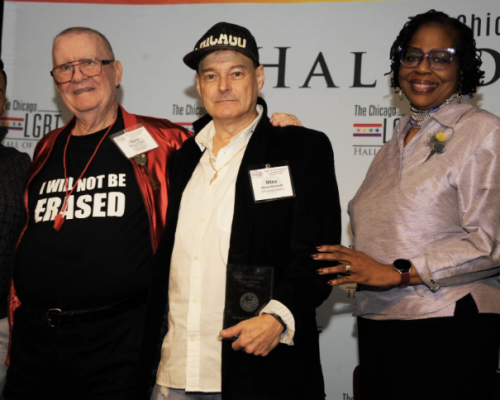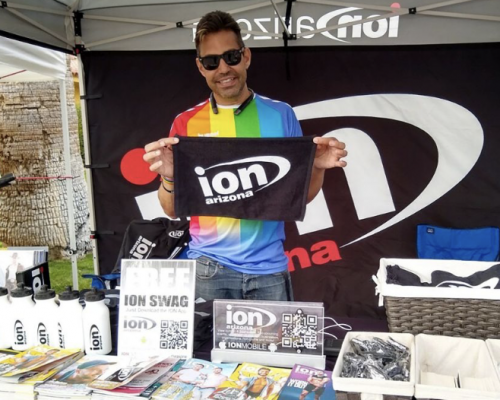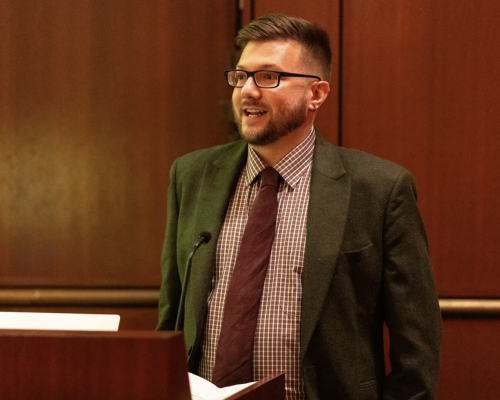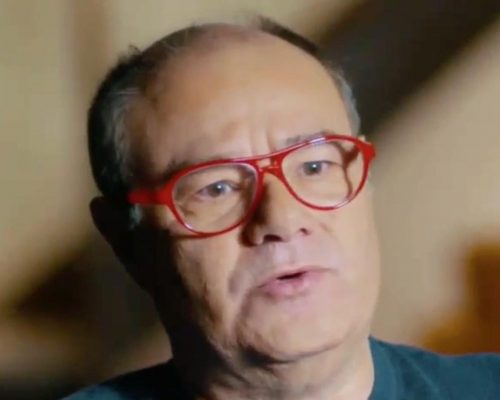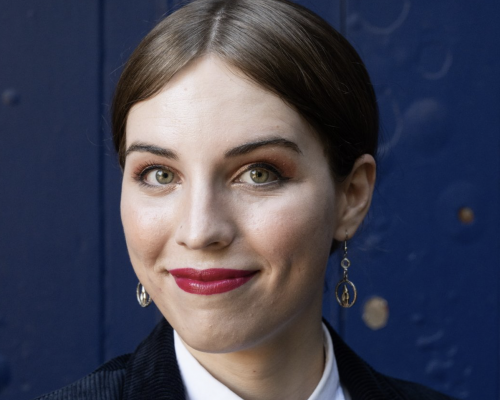by Joe Siegel
Geographic coverage area: Greater Kansas City and select cities in Kansas, Missouri, Illinois, Iowa, Nebraska and Arkansas.
Year founded: June 2004
Staff size and breakdown [writers, sales reps., etc.]: Independently owned by John Long and CampOut LLC. Writers are freelance and vary from 10-15 per issue on average. Two positions are contracted to a graphic designer and editor. One distribution person. No sales representative; publisher and editorial director John Long does that.
Physical dimensions of publication: Magazine trim size 8 1/4” x 10 1/4”
Average page count: 32 pages
Print run: 5,000 copies on average
*****
Press Pass Q: What part of Camp Magazine is the most popular?
Publisher John Long: I’d say community stories about individuals or organizations in the LGBT community. Camp is not a lifestyle publication and therefore we focus on community news in both current LGBT events and local entertainment. However we’re also known for our creative covers and often feature the actors of the satirical Late Night Theatre ensemble in their productions. I’ve been told by many readers that they look forward to our issues every month just to see our covers.
PPQ: Who came up with the name? What does it mean?
Long: The founding owners were Jim Gabel and myself. We were actually surprised when we did the trademark search that there were no other LGBT magazines with this iconic name and we created a national trademark. There are a few gay bars around the world named Camp or Kamp. We came up with the name for two reasons. The primary definition is because we serve the LGBTQ and allied communities so in that sense we are all in the same camp of “similar ideals” as well as the more theatrical use of the word “campy.” We use the dictionary definition of the word as such: Camp (1) (kamp) n. a group of people with the same ideals. Camp (2) adj. exaggerated in style, especially for humorous effect.
PPQ: How have readers responded? What feedback have you received?
Long: We founded Camp in 2004 because the last LGBT magazine [in the area] ceased publication and we felt the community needed a local LGBT magazine. There was an expensive LGBT lifestyle magazine in the market during our first few years, but they struggled financially and ceased publication. Readers have responded loyally to Camp as their local magazine. We’re often guests on the local LGBT radio magazine, “The Tenth Voice.” We create themed issues for the AIDS walk, the Missouri Gay Rodeo Association, SAVE Inc. (an AIDS service organization), Heartland Men’s Chorus and in the past we have done the official Pride Guides for several years.
PPQ: What challenges have you had to overcome in the last decade?
Long: Several years after launching as a monthly, we thought it might be more timely if we published every two weeks to keep news more current and also open the opportunity for advertising that needed a frequency more immediate than monthly. We published bi-weekly for two years before going back to monthly. It was a costly mistake since we doubled our expenses by coming out twice a month but didn’t necessarily double our revenue.
PPQ: What challenges are you facing right now?
Long: Challenges today are to stay relevant as a monthly LGBT magazine when we’re competing with social media and daily updates. Everyone these days is a Facebook reporter and shares whatever breaking story they see. Everything is “breaking,” which is obviously not something you can do as a monthly publication. So we stay with our core mission to cover the community and do in-depth stories on individuals and organizations.
PPQ: How has Camp Magazine changed since it was first launched?
Long: We’ve changed probably in three ways. We began in a newspaper format with three to five lead stories on the front page that would jump inside the magazine. Two years later, we changed format to a single image cover and immediately noticed our distribution of copies increased dramatically. One of our distribution locations said that in the past format, “people thought we looked too serious.”
And in June, 2012, we came out with a smaller trim format of 8 1/4” x 10 1/4” from the former tabloid trim size of 10 1/4” x 13”. That was only to be for a special June Pride issue, but the response from distribution points and readers was that they loved the smaller trim size because it was easier to place in distribution spots and easier to read in a more compact size. So at that point, we never did go back to the tabloid size and have stayed in that current magazine trim size ever since.
PPQ: What one change would you like to make?
Long: It’s difficult to say just one. We can always think of ways we would like to improve our publications. But if it was one change, I would love to print on glossy magazine stock or at least the covers on that stock.
PPQ: On the Kinsey Scale of 0-6 [exclusively straight to totally gay], how gay is your publication?
Long: I’d say 8. Most issues often feature one or two stories about our straight allies. I like the fact I can walk into coffee houses and see people I know are straight reading Camp without any shame.
PPQ: Do you see yourself as an “activist journalist”? If so, in what way?
Long: Before Camp, Jim Gabel and I formed a fundraising bicycle ride called PrideRide, and we ran that for five years. The money raised was for organizations that served the LGBT community. We turned it over to AIDS Walk and they have made it much more successful as the AIDS Bicycle Cruise. So that gave me a beginning in Kansas City activism, which I’ve tried to reflect in Camp.
Camp also has an editorial page in every issue, usually written by me, where we offer opinion. Several years ago, I spoke out in the editorial in favor of voting for the smoking ban in bars. That was probably not my smartest move since gay bars were so full of smokers and I was pointed out by many for my personal opinion that smoking in bars is a health issue for employees and customers, not just a personal freedom issue. Thankfully only a few people had that negative opinion and once they realized smoking inside was gone forever, they got used to it.
PPQ: What’s the most surprising feedback you’ve received from a reader?
Long: Years ago I received a very hateful letter from a male reader who said we had too many drag queens on our covers and that “maybe I was a drag queen or my lover was a drag queen.” I thought that was funny since at the time I think we had printed only eight covers in three years with drag and most of them were males dressed as women for Late Night Theatre productions.
PPQ: What is the biggest story Camp magazine has reported?
Long: That’s a tough question to answer after 10 years of publishing. Since we’re a monthly, it’s difficult to break a story. But I think one of our biggest stories is in our current February 2015 issue. It’s a cover story on a straight mother, Debi Jackson, and her activism in supporting her seven-year-old transgender daughter who decided to start living as a female at the age of four. Debi Jackson will be speaking at the Human Rights Campaign’s “Time to Thrive” conference in February and she is also the president of our local PFLAG group.
PPQ: What advice do you have for others working in LGBT media?
Long: As a former magazine consultant who saw my share of magazine mistakes and failures from clients who had hired me to fix their problems, I’d say the same thing to someone in the LGBT media as I’d say to the straight media, and that is: Stay true to the needs of your market, and publish for your market, not yourself. The biggest mistake I’ve seen is when people think of their media as “their baby” and they spend money they can’t afford or go off in directions the community hasn’t asked for. Their publication becomes nothing more than a vanity magazine supporting their own ego and they end up going out of business.
PRESSING QUESTIONS
Volume 16
Issue 11


